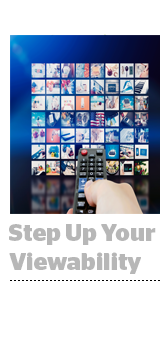
Brad Stamulis, director of digital marketing at Dish Network, has long called out viewability measurement’s shortcomings – but at AdExchanger’s Programmatic I/O in New York City on Tuesday, he specified the steps the industry needs to take to fix it.
Eliminating waste in programmatic marketing is always a challenge when it comes to viewability and Stamulis wants marketers like Dish to pay only for ads they know someone saw.
“I hope we’re not standing here in a few years, paying for ads we don’t get,” he told the crowd at Programmatic I/O.
Stamulis’ suggestion is threefold.
First, Stamulis urges marketers to do a “prebid,” where they create thresholds in a predictive model that shows whether an ad is likely to be visible. If the algorithm predicts it won’t be visible, the buyer does not bid on it. Stamulis compared this to insurance – it’s not 100% accurate, but better to be safe before you buy.
Next, a buyer combines the prebid with post-viewability reporting. This technique lets marketers “remove attribution for nonviewable impressions,” Stamulis said. The buyer knows exactly what they’ve paid for and can optimize away from ads that people didn’t see.
But predictive models and post-viewability reporting don’t mean a lot until they are put into the DSP dashboards, where they are easily accessible to marketers. Since DSPs don’t automatically give viewability information to marketers, Stamulis suggests a simple solution so marketers know what they paid for: Call upon DSPs to put viewable adjusted metrics into all their dashboards.
“[Viewability] can potentially get lost in the shuffle otherwise or not seen as important, which then naturally implies [DSPs] are willing to allow you to accept getting less than you are paying for,” Stamulis told AdExchanger in a written message.
The debate over whether a single viewability standard is possible is still raging. With exchanges under more pressure to guarantee viewability, Stamulis’ ideas might be more pertinent than ever.
This post was syndicated from Ad Exchanger.


More Stories
Ibotta Crosses The IPO Finish Line – Now The Real Work Begins
Commerce Can No Longer Be Where Creative Goes to Die
Is This TikTok Ban, Like, Happening?; DTC Darlings Lose Their Retail Darling